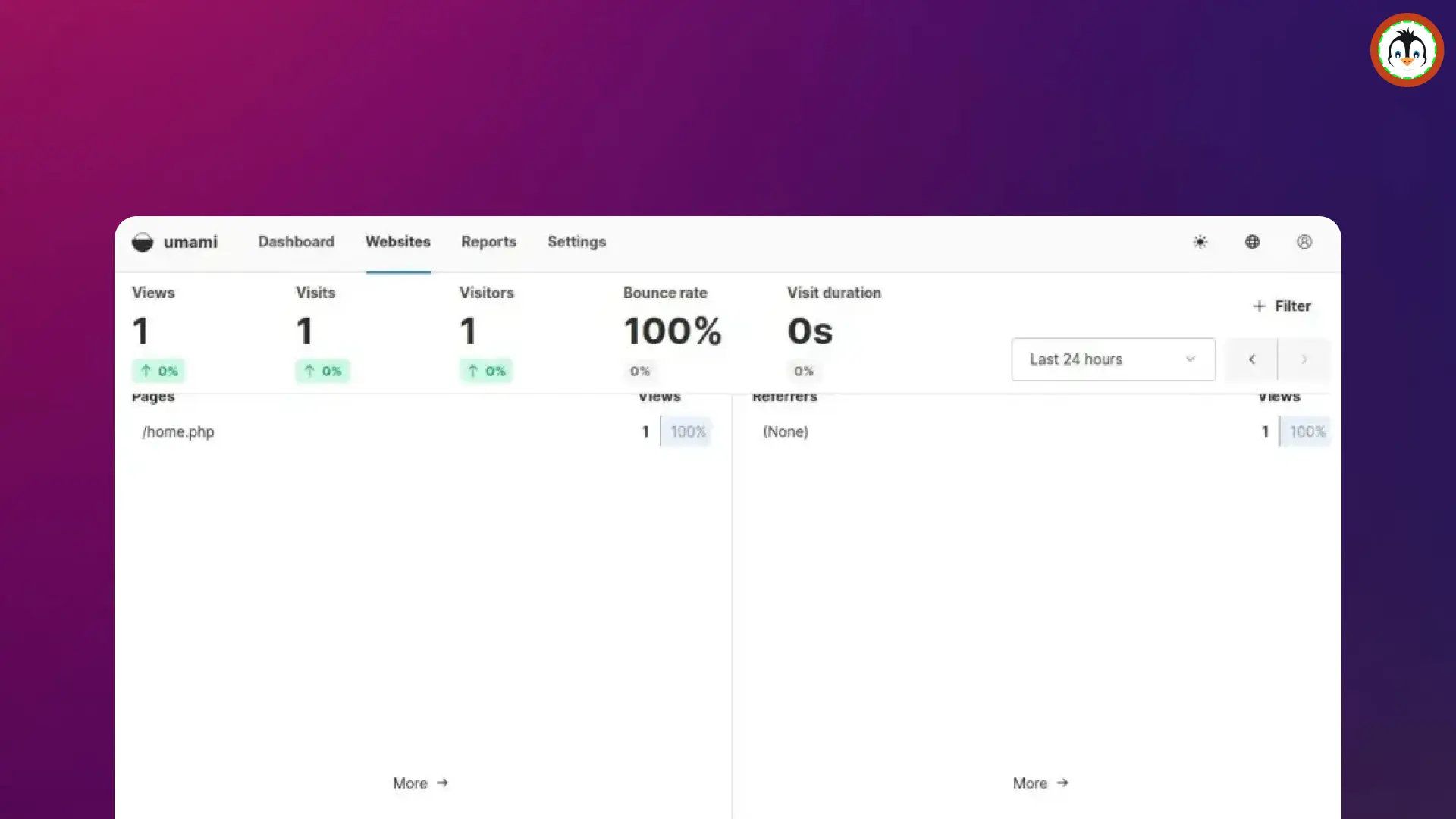Stellar Repair for MS SQL is a professionals software program that assists system administrators, database administrators, and IT professionals in recovering damaged SQL database files, restoring corrupted files, or resetting forgotten passwords.
It attempts to repair and recover all corrupted database objects—such as tables, primary keys, views, triggers, collations, functions, deleted records, etc.—for supported versions of SQL Server (2022, 2019, 2017, 2016, 2014, and earlier), and restores them to their original schema.
Using Stellar Repair for MS SQL, user also have option to save the repaired database to a new database, an existing database, or in other formats (such as CSV, HTML, or XLS). This is especially useful when performing repairs on a system without MS SQL server installed.
In this article, you’ll discover its key features, system requirements, real-world use cases, and our opinion on the product.
Key Features
The key features of this tool mainly revolve around repairing corrupt SQL database files, restoring from corrupt backup files, and resetting forgotten SQL passwords. Let's explore each of these features in more detail.
Repair Corrupt SQL Database Files
Stellar’s flagship SQL repair module efficiently handles database corruption scenarios—ranging from minor consistency issues to severe page-level damage. It repairs both primary (.MDF) and secondary (.NDF) files and recovers all database objects, including:
- Tables and indexes
- Views, triggers, stored procedures
- Foreign keys, constraints, and user-defined data types
The software also supports parallel processing, significantly speeding up recovery for large databases.
Restore from Corrupt Backup Files (.BAK)
The Backup Extractor module is a game-changer for DBAs who can’t rely on DBCC CHECKDB or when .bak files become unreadable. It supports:
- Full, Differential, and Transaction Log backups
- Preview of recoverable objects before saving
- Export to new or live SQL databases
With a simple UI and comprehensive log reporting, this feature alone justifies the investment for enterprises with complex backup strategies.
Reset Forgotten SQL Passwords
The Password Recovery module allows you to regain access to protected SQL databases by resetting user account passwords—even if the master database is compromised. It supports one-click operations for all recent SQL Server versions and offers a lightweight interface that minimizes complexity.
Pros & Cons
Here’s a quick overview of the pros and cons of Stellar Repair for MS SQL.
| Pros | Cons |
|---|---|
| All-in-one solution: Repair, restore, reset | It’s proprietary software |
| Free version available for testing | Paid versions are expensive ($300–$500) |
| Easy-to-use interface | |
| High recovery accuracy | |
| Compatible with all major SQL Server versions |
System Requirements
Below are the minimum and recommended system requirements to run Stellar Repair for MS SQL smoothly:
- Disk Space: 250 MB for installation
- Processor: Intel-compatible (x64)
- RAM: 16 GB minimum (32 GB recommended)
- OS: Linux or Windows 11, 10, 8.1, 8, and Server editions (64-bit only)
Install Stellar Repair for MS SQL on Linux
It is available for both Windows and Linux (especially for Ubuntu and Red Hat-based distributions). In this article, I'll show you the steps to install it on a Linux distribution.
To begin, visit the Download Stellar Repair for MS SQL page and choose the package version that matches your Linux distribution. If you're unsure of your distribution, you can check it using the lsb_release -a command.
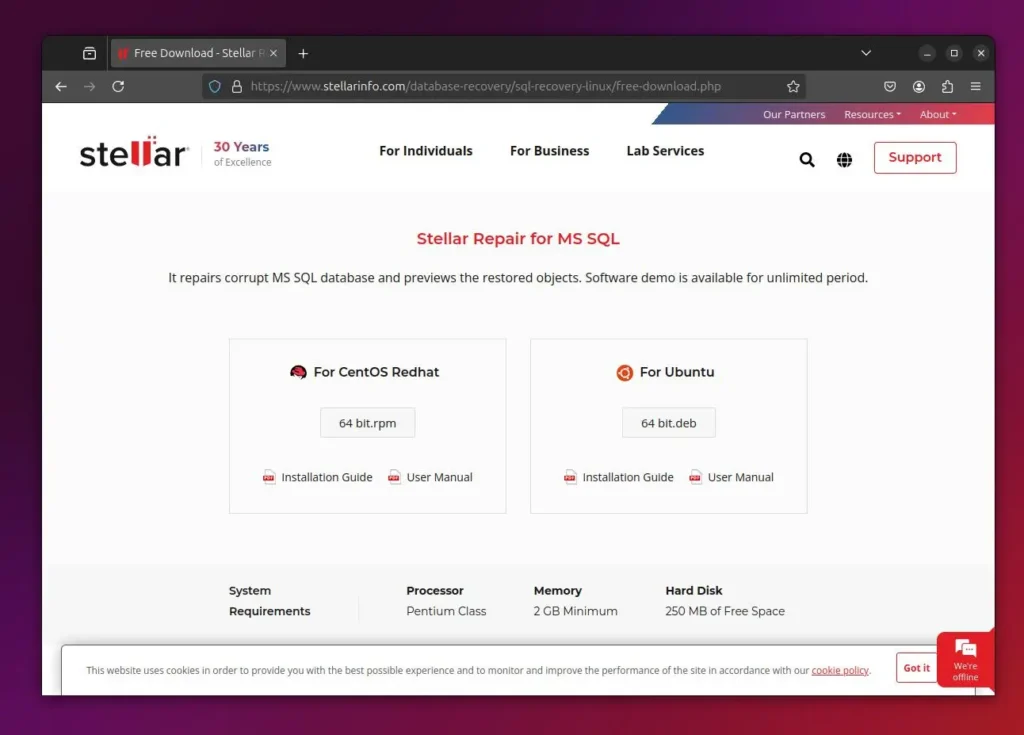
Once the installation is finished, navigate to the download directory and execute one of the following commands, depending on your Linux distribution.
# Navigating to Downloads Directory
$ cd ~/Downloads
# Installing on Ubuntu-based distributions
$ sudo dpkg -i StellarRepairforMSSQL.deb
# Installing on Red Hat-based distributions
$ sudo rpm -i StellarRepairforMSSQL.rpmThe following picture shows the installation on an Ubuntu system.
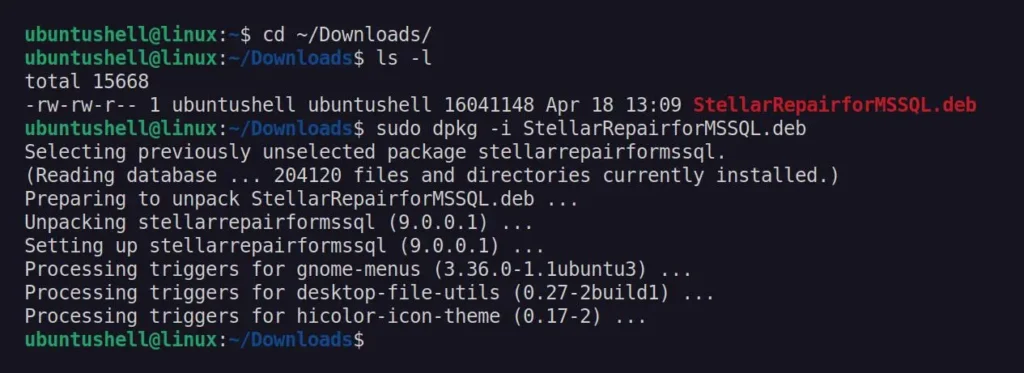
Once the installation is complete, you can search for and launch the application from the application menu.

Usage
Once the application is launched, it asks for the privileges to perform the task. The logged-in user is automatically detected and filled in the username field, while the password needs to be provided to grant the privileges.
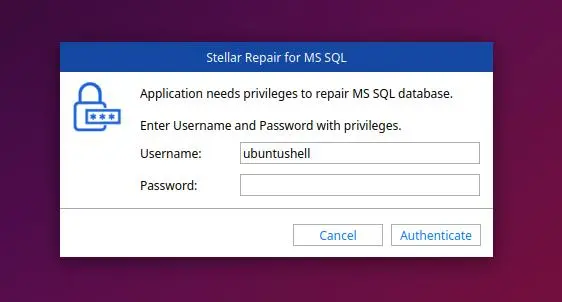
You will now be presented with the main screen of the program, from where you can recover, repair, or reset the SQL database. For demonstration purposes, I'll show you the steps to recover a corrupted MS SQL database. Let's begin by selecting the database from the top left corner of the window.
📝 Note
Before proceeding further, make sure to back up your MS SQL database.
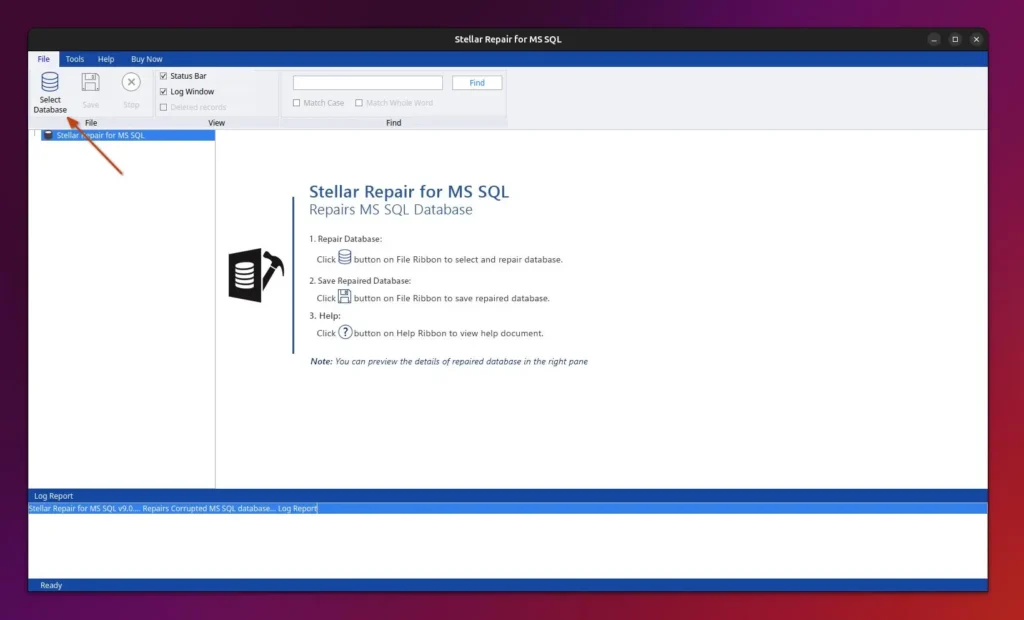
Now, a new window will appear asking you to select the database. If you are on Linux, the default location for MS SQL database files is "/var/opt/mssql/data/". For Windows, it is located at "C:\Program Files\Microsoft SQL Server\MSSQL{version}.MSSQLSERVER\ MSSQL\DATA".
📝 Note
An MS SQL database does not necessarily need to be present on the recovery system. You can copy an MS SQL database from another system to the system where the recovery program is installed for recovery.
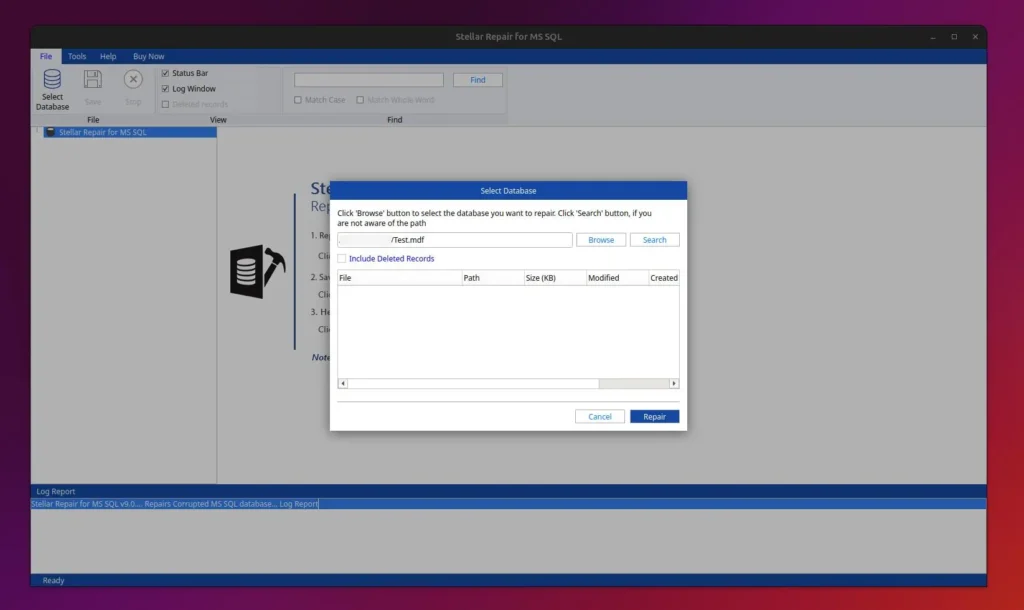
Next, it will ask for the version of MS SQL Server on which the MS SQL database was created. Since I was using SQL Server 7.0, I'll select that.
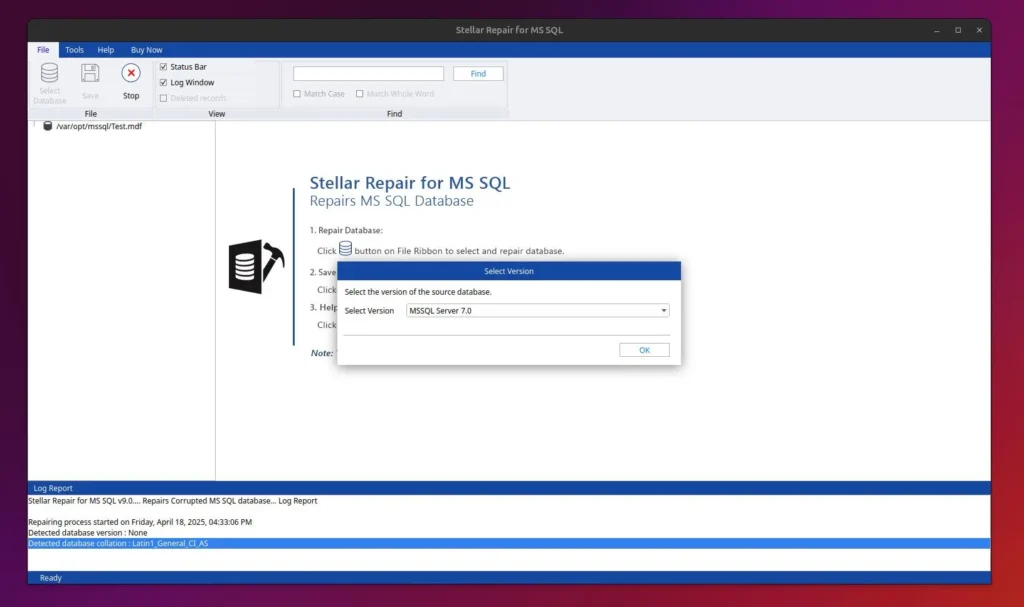
Finally, it tries to repair the corrupted MS SQL database, and when finished, it will give you the status in the bottom console.
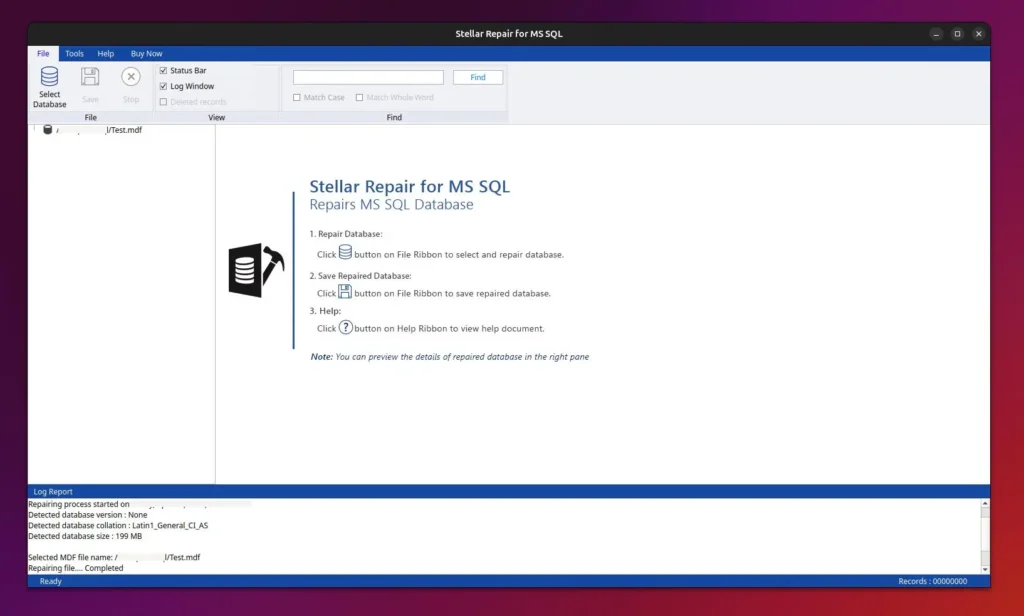
Since the MS SQL database I provided is free of issues and corruption, no errors were detected, as indicated in the log report below. However, the situation may differ in your case.
Uninstall Stellar Repair for MS SQL on Linux
In the future, if you no longer require this tool, you can effortlessly uninstall it from your system using the default package manager through the terminal.
# Uninstalling on Ubuntu-based distributions
$ sudo apt remove stellarrepairformssql
# Uninstalling on Red Hat-based distributions
$ sudo dnf remove stellarrepairformssqlConclusion
Stellar Repair for MS SQL is a reliable SQL database recovery solutions for repairing corrupt databases, restoring from damaged backups, and resetting forgotten SQL passwords.
While some of these tasks can be performed using command-line tools or open-source alternatives, if you prefer having all essential features bundled in one package, this tool is worth considering.
